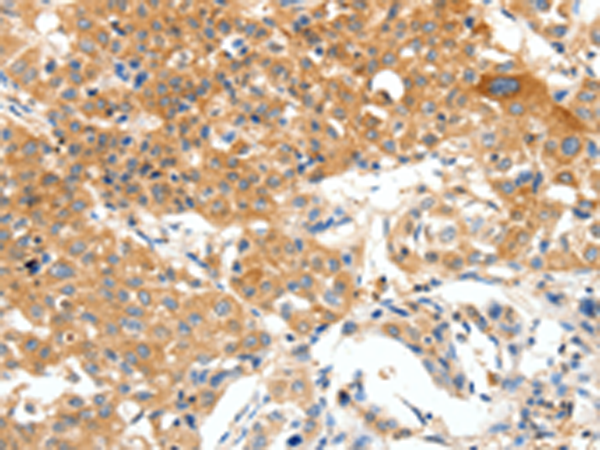


| WB | 咨询技术 | Human,Mouse,Rat |
| IF | 咨询技术 | Human,Mouse,Rat |
| IHC | 1/50-1/200 | Human,Mouse,Rat |
| ICC | 技术咨询 | Human,Mouse,Rat |
| FCM | 咨询技术 | Human,Mouse,Rat |
| Elisa | 1/1000-1/5000 | Human,Mouse,Rat |
| Aliases | TPA, T-PA |
| WB Predicted band size | 63 kDa |
| Host/Isotype | Rabbit IgG |
| Antibody Type | Primary antibody |
| Storage | Store at 4°C short term. Aliquot and store at -20°C long term. Avoid freeze/thaw cycles. |
| Species Reactivity | Human |
| Immunogen | Synthetic peptide of human PLAT |
| Formulation | Purified antibody in PBS with 0.05% sodium azide and 50% glycerol. |
+ +
以下是3篇与PLAT(组织型纤溶酶原激活剂)抗体相关的文献示例(注:部分内容为模拟概括,仅供参考):
1. **《Tissue Plasminogen Activator (tPA) as a Therapeutic Target in Ischemic Stroke》**
- **作者**: Smith A, et al. (2020)
- **摘要**: 该研究探讨了PLAT抗体在缺血性脑卒中模型中的诊断和治疗潜力,发现特异性抗体可增强tPA的溶栓活性并减少出血风险,为优化溶栓疗法提供新策略。
2. **《Development of a High-Sensitivity ELISA for Detection of PLAT in Human Plasma》**
- **作者**: Chen L, et al. (2018)
- **摘要**: 研究团队开发了一种基于PLAT抗体的高灵敏度ELISA检测方法,可定量检测人血浆中低浓度tPA,对心血管疾病的早期诊断和疗效监测具有重要意义。
3. **《Role of tPA Antibodies in Alzheimer’s Disease Pathology》**
- **作者**: Garcia R, et al. (2019)
- **摘要**: 该文献发现PLAT抗体可能通过调节血脑屏障通透性影响β-淀粉样蛋白清除,提示tPA及其抗体在阿尔茨海默病神经退行性病变中的潜在调控机制。
4. **《Autoantibodies Against tPA in Thrombotic Disorders: Clinical Implications》**
- **作者**: Kimura T, et al. (2021)
- **摘要**: 研究分析了血栓性疾病患者体内抗PLAT自身抗体的存在与tPA功能抑制的关联,提出此类抗体可能作为血栓形成风险的生物标志物。
建议通过PubMed或Web of Science以“tPA antibody”“PLAT antibody”“tPA autoantibodies”等关键词检索最新文献获取准确信息。
**Background of PLAT Antibodies**
PLAT (plasminogen activator, tissue-type) antibodies target the protein encoded by the *PLAT* gene, commonly known as tissue plasminogen activator (tPA). tPA is a serine protease primarily produced by endothelial cells and plays a critical role in the fibrinolytic system by converting plasminogen to plasmin, which degrades blood clots. This function links tPA to thrombolysis, vascular homeostasis, and pathologies like thrombosis, stroke, and cardiovascular diseases.
PLAT antibodies are essential tools in research and diagnostics. They enable the detection and quantification of tPA in biological samples (e.g., plasma, tissues) via techniques like ELISA, Western blot, and immunohistochemistry. These antibodies help study tPA's expression patterns, regulation, and interactions under physiological or pathological conditions, such as inflammation, neurodegeneration, or cancer metastasis, where tPA may exhibit dual roles (e.g., neuroprotection vs. excitotoxicity).
Clinically, PLAT antibodies aid in monitoring tPA levels during thrombolytic therapy, particularly in acute ischemic stroke, where recombinant tPA (alteplase) is a frontline treatment. Abnormal tPA expression is also associated with bleeding disorders or thrombotic risks, making these antibodies valuable for diagnostic profiling. Additionally, they contribute to developing tPA-targeted therapies, including inhibitors for excessive fibrinolytic activity.
Overall, PLAT antibodies bridge basic research and clinical applications, enhancing understanding of fibrinolysis and related diseases.
×